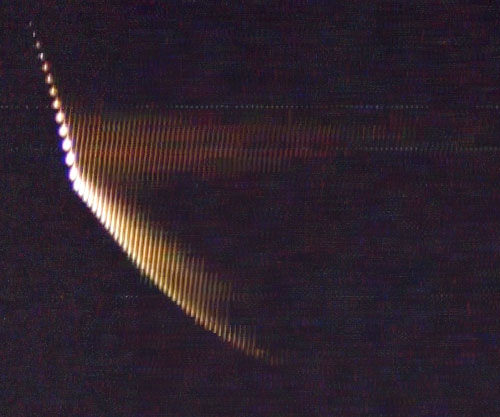While the Camelopardalid shower only produced a few meteors, the lack of flashy disintegrations showed astronomers something new, a new study reveals: the dust from its parent comet (Comet 209P/Linear) was much more fragile than the usual. The reasons are still being investigated, but one theory is that after a century in space, there wasn’t much left to run into.
“Some mechanism was at work that efficiently fragmented the larger meteoroids,” stated Peter Jenniskens, a meteor astronomer with the SETI Institute who, along with colleague Esko Lyytinen, first predicted the existence of the shower a decade ago.
“Our best meteor was no more luminous than the star Vega,” added Jenniskens, “but it gave us a clue as to why there were few bright ones: It was so fragile that the meteoroid suddenly dispersed into a cloud of dust at the end of its trajectory.”
This ‘weak” shower stands in contrast to two meteor showers that took place out of interactions with comet 21P/Giacobinni-Zinner. This produced meteor “storms” in 1933 and 1946 during the Draconids. That comet was more active and the dust grains that left it likely had a lot of ice in them. Comet 209P/Linear did not have that type of ejection, nor was it very active.
You can read more Universe Today observations of the new shower in this past story.
Source: SETI Institute


…brilliant photograph!